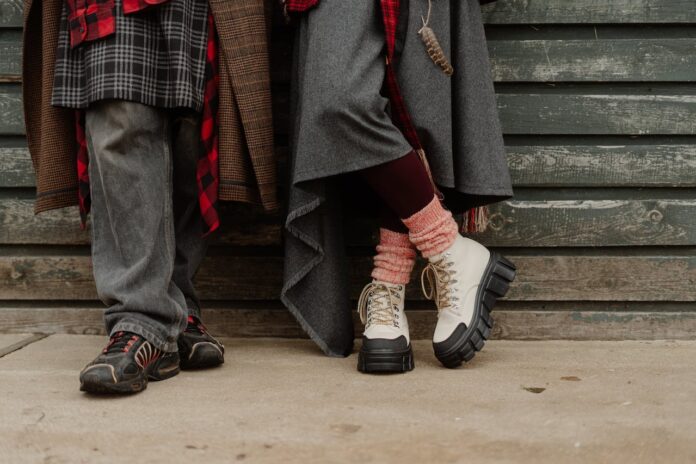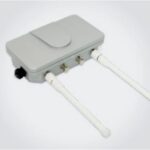The world of podiatrist-recommended shoes has come a long way. From big black chunky running shoes to designer sneakers selling for eye-watering amounts of money, podiatrists prioritize style and comfort.
Shoes are one of the biggest influences on our feet, so choosing ones that support your needs is essential. To avoid putting pressure and squeezing on the feet, look for shoes with round fronts and spacious toe boxes.
Check the Sizing
While podiatrists have historically been renowned for telling patients to put away their heels and chuck the thongs, there’s been a movement to connect fashion and function. Now, podiatrists can design footwear with built-in support and modern cushioned foams in sandals, heels, business shoes, and boots. Discover stylish yet foot-friendly options at https://www.retailmenot.com/view/hoka.com, where innovative designs prioritize fashion and podiatric well-being, showcasing the evolving synergy between style and foot health.
When choosing footwear, you should always make sure the sizing is correct. Your shoe size can vary across different brands, and even the same size can have a different fit depending on the style. It’s essential to try on the shoes while standing and wear the socks you usually wear. Also, wiggle your toes and walk around on hard and carpeted surfaces.
Ideally, there should be 7 mm (about a pinky finger’s width) between your longest toe and the end of the shoe. A shoe that’s too tight can cause rubbing, blistering, and pain. Try a few pairs to determine which shoes fit your foot the best. If you have any questions, talk to your podiatrist for advice.
Check the Fit
Shoes that don’t fit properly are the leading cause of foot and ankle problems. That’s why knowing how to measure your foot correctly and using the proper shoe sizing charts is essential.
A good fit means that the shoe should be snug but not tight. Too much space in the shoe can cause the foot to slide in the shoe, causing blisters and calluses. The shoe should also have enough room to accommodate any foot inserts or orthotics you may be wearing.
If you are looking for podiatrist-recommended shoes, shopping in person rather than online is best. This will enable you to ensure the boots fit correctly by trying them on while your feet are at their widest. If you shop in a store, bring your foot coverings and any orthotics you might be wearing. Taking your time when trying on shoes is also a good idea. It is better to have a few minutes to get the right fit than to spend hours in agony because your shoes are too tight.
Check the Material
The podiatrist recommended shoes should be made of good quality material. Look for leather shoes with firm yet flexible soles supporting your feet. Check the shoe for seams or tags that could rub against your foot and cause blisters.
If you are buying your podiatrist-endorsed shoes online, be sure to take note of their return policy. Shoe sizing is different from brand to brand, and most people have one foot slightly larger than the other. If your shoes are too small for both feet, you may need a better fit and even worse foot problems down the line.
Make sure you try on your new shoes with the exact socks you will be wearing them with. Your feet tend to swell throughout the day, so you want to ensure your shoes will be comfortable enough for the entire day. Shoe brands have created a line of fashionable sandals that combine style with foot health. They provide stability and arch support that helps with conditions such as plantar fasciitis.
Check the Arch Support
For the most effective shoe arch supports (also known as insoles or orthotics), you want them to be custom fit to your foot. You also want them made from a breathable and soft material to ensure your feet get the support they need without overheating.
The wet foot test is an excellent way to see if a shoe has an arch support that’s right for you. This is done by laying paper or cardboard on the floor and then putting your bare foot on it. The wet footprint will give you a clear idea of your foot’s shape and arch type.
If you have a high-arched foot, look for shoes that are narrower at the heel and have a more curved last. If you have a low arch, choose shoes that are wider at the heel and more rectangular. You also want to ensure the shoe’s sole bends where your big toe joint bends – the metatarsal arch.
Check the Insoles
It’s a good idea to ask your podiatrist for specific recommendations. They know your feet and which issues you’re trying to correct, so they know which shoes are best for you.
When purchasing orthotic shoes, check that they have a firm, sturdy heel counter and that the sole is stable. To test this, hold the shoe and gently twist it. You should not be able to wring the shoe out, but you should be able to turn it quickly.
If you plan on using an over-the-counter insole with your new shoes, make sure that they fit comfortably into the base of the shoe and that you can wiggle your toes without rubbing or squeezing them. If you have health conditions like diabetes or poor circulation, a simple over-the-counter insole may not be the best choice for you.
Look for shoes that provide the proper support, cushioning, and stability if you have foot problems to avoid discomfort and injury from podiatrists. You can do this by looking for a podiatrist-approved seal of acceptance on the shoe box you’re considering.









